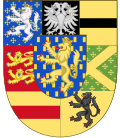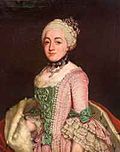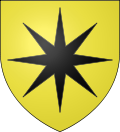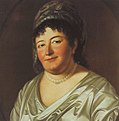| Picture | Name | Father | Birth | Marriage | Became Countess | Ceased to be Countess | Death | Spouse |
|---|
 | Anna Katharina of Nassau-Wiesbaden-Idstein | John Louis I, Count of Nassau-Wiesbaden-Idstein
(Nassau-Wiesbaden-Idstein) | 4 December 1590 | 6 May 1607 | 7 December 1613
husband's accession | 6 January 1622 | Simon VII |
 | Maria Magdalene of Waldeck-Wildungen | Christian, Count of Waldeck-Wildungen
(Waldeck-Wildungen) | 27 April 1606 | 27 April 1623 | 26 March 1627
husband's death | 28 May 1671 |
 | Katharina of Waldeck-Wildungen | 20 October 1612 | 19 June 1631 | 8 August 1636
husband's death | 24 November 1649 | Simon Louis |
 | Ernestine of Isenburg-Büdingen-Birstein | Wolfgang Henry, Count of Isenburg-Büdingen-Birstein
(Isenburg) | 9 February 1614 | 1 January 1648 | 10 June 1652
husband's accession | 5 December 1665 | Herman Adolph |
 | Amalia of Lippe-Brake | Otto, Count of Lippe-Brake
(Lippe) | 20 September 1629 | 27 February 1666 | 10 October 1666
husband's death | 19 August 1676 |
 | Amalia of Dohna-Schlobitten | Christian Albert, Burgrave and Count of Dohna
(Dohna-Schlobitten) | 2 February 1644 | 15/27 September 1666 | 10 October 1666
husband's accession | 12 May 1697
husband's death | 11 March 1700 | Simon Henry |
 | Johanna Elisabeth of Nassau-Dillenburg | Adolph, Prince of Nassau-Schaumburg
(Nassau-Dillenburg) | 5 September 1663 | 16 June 1692 | 12 May 1697
husband's accession | 9 February/18 July 1700 | Frederick Adolphus |
 | Amalia of Solms-Hohensolms | Louis, Count of Solms-Hohensolms
(Solms-Hohensolms) | 13 October 1678 | 16 June 1700 | 18 July 1718
husband's death | 14 February 1746 |
 | Johannette Wilhelmine of Nassau-Idstein | George August, Count of Nassau-Idstein
(Nassau-Idstein) | 14 September 1700 | 16 October 1719 | 12 October 1734
husband's death | 2 June 1756 | Simon Henry Adolph |
 | Polyxena Louise of Nassau-Weilburg | Charles August, Prince of Nassau-Weilburg
(Nassau-Weilburg) | 27 January 1733 | 24 August 1750 | 27 September 1764 | Simon Augustus |
 | Maria Leopoldine of Anhalt-Dessau | Leopold II, Prince of Anhalt-Dessau
(Ascania) | 18 November 1746 | 28 September 1765 | 15 April 1769 |
 | Casimire of Anhalt-Dessau | Leopold II, Prince of Anhalt-Dessau
(Ascania) | 19 January 1749 | 9 November 1769 | 8 November 1778 |
 | Christine Charlotte of Solms-Braunfels | Frederick William, Prince of Solms-Braunfels
(Solms-Braunfels) | 30 August 1744 | 26 March 1780 | 1 May 1782
husband's death | 16 December 1823 |
|












































